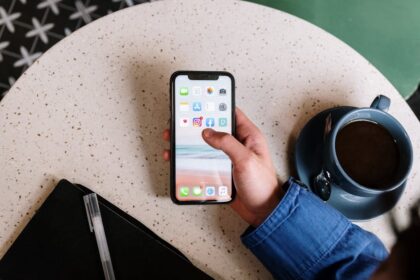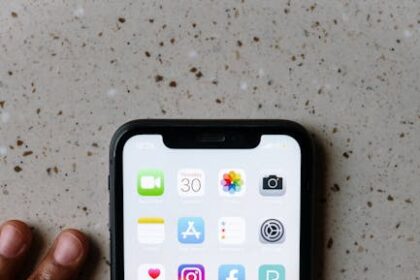Optimizing Facebook ad creative for higher ROI transcends mere aesthetic appeal; it is a strategic imperative demanding a profound understanding of psychological triggers, data-driven insights, and continuous iteration. The creative element, encompassing visuals, ad copy, and calls to action, serves as the primary touchpoint between a brand and its prospective customers on the Facebook platform. Its efficacy directly correlates with key performance indicators (KPIs) such as click-through rates (CTR), conversion rates (CVR), cost per acquisition (CPA), and ultimately, return on ad spend (ROAS). In an increasingly competitive advertising landscape, where audience targeting capabilities are becoming more democratized, creative differentiation stands as the most potent lever for advertisers seeking to maximize their advertising investment.
The role of creative in ad performance has never been more critical. As platform algorithms mature and audience targeting features become more standardized, the unique selling proposition of an ad campaign often boils down to the compelling nature of its creative assets. High-quality creative grabs attention amidst a crowded news feed, resonates emotionally with the target audience, communicates value propositions effectively, and prompts desired actions. Conversely, poorly optimized creative can lead to ad fatigue, plummeting engagement rates, inflated costs per impression (CPM) and click (CPC), and ultimately, an unsustainable ad spend with minimal return. The human brain processes visuals significantly faster than text, making the visual component of Facebook ads the immediate gateway to a user’s attention. Once attention is captured, the ad copy must work in tandem to articulate the value, build desire, and compel action.
The psychology behind effective ad creative is rooted in fundamental principles of human behavior and cognition. The AIDA model (Attention, Interest, Desire, Action) provides a robust framework for understanding the journey a user undertakes when encountering an ad. Firstly, an ad must unequivocally grab attention. In a scroll-heavy environment, this demands “thumb-stopping” visuals or an immediate, captivating hook in video. Secondly, once attention is secured, the creative must generate interest. This involves presenting information in a way that is relevant, intriguing, and promises a solution or benefit. Thirdly, the ad needs to cultivate desire. This is achieved by showcasing the product or service’s advantages, illustrating how it solves a problem or fulfills a need, and evoking positive emotions associated with its use. Finally, the creative must prompt a clear and concise action. A strong call to action (CTA) removes ambiguity and directs the user towards the next step in their journey. Beyond AIDA, effective creative also prioritizes low cognitive load, meaning it is easy to understand and process quickly. Overly complex visuals or convoluted copy can deter engagement. Emotional connection is another critical psychological lever; ads that tap into joy, excitement, empathy, or even mild fear (of missing out) tend to perform significantly better than purely rational appeals. Defining “high ROI” for creative extends beyond traditional metrics like CPM or CPC. While these indicate efficiency in delivery, true ROI focuses on downstream conversions and revenue. A high-CPM ad could still yield a higher ROI if its creative is so compelling that it drives a significantly higher conversion rate, lowering the CPA and increasing ROAS. Therefore, creative optimization must always be viewed through the lens of ultimate business objectives.
Laying the groundwork for stellar creative begins long before any visual or textual asset is produced. Pre-production is a critical phase for ensuring that creative efforts are strategic, targeted, and aligned with overall campaign goals. Deep audience understanding and persona development are paramount. This goes beyond basic demographics to encompass psychographics – the attitudes, interests, values, and lifestyles of the target audience – and behavioral data, such as past purchase history, online activities, and content consumption patterns. Understanding their pain points, aspirations, and desires allows for the crafting of creative that speaks directly to their needs and resonates on a personal level. Furthermore, analyzing their language and tone preferences ensures that ad copy feels authentic and relatable. A crucial step often overlooked is competitor creative analysis. Examining what your competitors are doing, what appears to be working for them (high engagement, frequent appearances in feeds) and what is not (low engagement, negative comments) provides valuable insights and helps identify opportunities for differentiation.
Campaign objective alignment is another foundational aspect of creative strategy. Different Facebook ad objectives necessitate different creative approaches. For brand awareness campaigns, the creative should prioritize emotional resonance, storytelling, and memorability, often featuring captivating visuals or short, impactful videos designed to leave a lasting impression. The goal here is to introduce the brand and its core values, not necessarily to drive immediate clicks. For consideration objectives (traffic, engagement, video views), creative should focus on communicating the value proposition, illustrating how the product or service solves a problem, or engaging the audience with informative or entertaining content. These creatives might include explainer videos, benefit-driven imagery, or interactive elements. For conversion objectives (sales, leads, app installs), the creative must be highly persuasive, leveraging urgency, scarcity, social proof (testimonials, reviews), and a crystal-clear call to action. Product benefits, features, and pricing are often more prominent in conversion-focused creative. Developing a unique selling proposition (USP) and a core message is the bedrock of compelling creative. What makes your product or service truly distinct? How does this difference translate into tangible benefits for the customer? This USP must be succinctly communicated through both visual and verbal elements of the ad. If your USP is speed, your visuals might emphasize quick delivery or rapid results, while your copy highlights efficiency. Finally, documenting all these strategic decisions in a comprehensive creative brief serves as the blueprint for content creation. A robust creative brief should clearly outline the target audience, campaign objective, key message/USP, desired action, visual and verbal style guidelines (brand colors, fonts, tone of voice), and technical specifications (aspect ratios, file types). This brief ensures all creative stakeholders are aligned and that the resulting assets are purpose-built for performance.
Deconstructing the ad reveals its core creative elements, each playing a vital role in its overall effectiveness. The visuals are arguably the dominant force, responsible for the initial attraction and a significant portion of the ad’s storytelling. For image creative, best practices include using high-quality, high-resolution imagery that is relevant, on-brand, and emotionally resonant. Product-in-use shots often outperform sterile product-only shots, as they help potential customers visualize themselves benefiting from the product. Lifestyle imagery can evoke aspirational feelings and connect the product to a desired way of life. While Facebook relaxed its 20% text overlay rule, it’s still advisable to use text sparingly and strategically on visuals, ensuring readability and impact. Strong contrast and thoughtful use of color psychology can enhance an image’s ability to stand out and convey specific emotions. The choice between a single image and a carousel depends on the message complexity; carousels are excellent for telling a sequential story or showcasing multiple products/features.
Video creative mastery is increasingly essential, given the platform’s shift towards video consumption. The cardinal rule of video ads is to hook the viewer in the first 3 seconds. This “thumb-stopping” power can come from unexpected visuals, immediate problem statements, or intriguing actions. Videos should primarily “show, don’t tell,” demonstrating product benefits or the experience of using a service. Optimal lengths vary by objective: short-form (under 15 seconds) is ideal for awareness and quick engagement, mid-form (15-60 seconds) for demonstrating features or telling a brief story, and longer forms for more complex explanations or testimonials, though shorter is generally better for initial engagement. A critical consideration for Facebook video is the sound on/off strategy. A vast majority of users watch videos with sound off in their feed, making captions king. Videos must be understandable and effective even without audio. Aspect ratios are also crucial; vertical video (9:16) performs exceptionally well in Stories and Reels, while square (1:1) is highly effective for feed placements due to its maximum screen real estate. The pace and editing of a video significantly influence engagement; faster cuts and dynamic transitions can maintain attention. User-Generated Content (UGC) video, explainer videos, testimonial videos, and demo videos are highly effective formats that leverage authenticity and direct communication. The decision between animation and live-action depends on brand aesthetic, message complexity, and budget.
Carousel and Collection Ads offer unique opportunities for storytelling and product showcasing. Carousels allow for sequential storytelling, where each card builds on the previous one to unfold a narrative or highlight different aspects of a product line. They are excellent for showcasing multiple products, features, or benefits. Mixing images and videos within a carousel can also enhance engagement. Strategically ordering the cards to present the most compelling visual first and ending with a strong CTA is vital. Instant Experience (Canvas) Ads provide an immersive, full-screen mobile experience, acting as a mini-website within Facebook. These allow for interactive elements, rich media, and a seamless journey from ad to conversion, significantly reducing load times compared to external websites. They are particularly effective for telling a comprehensive brand story or showcasing a product catalog in an engaging, interactive format.
The ad copy functions as the persuasion engine, transforming captured attention into genuine interest and desire. The headline is the second most important element after the visual, serving as the promise and the hook. Effective headlines are benefit-oriented (“Lose 10lbs in 30 Days”), problem/solution focused (“Tired of Wasting Money on Ads?”), urgency or scarcity driven (“Limited Stock – Shop Now!”), question-based (“Ready to Transform Your Business?”), or curiosity-inducing (“The Secret to Flawless Skin”). A strong headline should call to value, immediately demonstrating what the user stands to gain. The primary text provides the narrative and essential details. Its structure typically follows a hook-body-CTA format. The tone of voice must align with the brand identity. Utilizing bullet points, emojis, and short paragraphs enhances readability, especially on mobile devices. Storytelling and emotional appeal in the primary text can deepen engagement, while proactively addressing common objections can build trust. Strategic integration of scarcity, urgency, and social proof (e.g., “Join 10,000 satisfied customers”) amplifies persuasive power. The decision between long-form and short-form copy depends on the complexity of the offering and the audience’s stage in the buying journey. Complex products or services, or audiences in a consideration phase, often benefit from longer copy that provides more detail and addresses potential questions. Simpler offerings or awareness campaigns typically fare better with concise copy. The link description (the text under the headline and above the CTA button) should concisely reinforce the CTA and reiterates a key benefit. It serves as a final mini-hook before the user clicks. The Call to Action (CTA) button is the final prompt for action. It must be clear and specific, aligning perfectly with the campaign objective (e.g., “Shop Now” for e-commerce, “Learn More” for content, “Sign Up” for lead generation). Ambiguous CTAs can lead to confusion and lost conversions.
For video ads, sound and music are crucial for enhancing engagement and emotional impact, provided they are used strategically and users are likely to have sound on (e.g., Reels or in-stream placements). Music can set the mood, reinforce brand identity, and make the ad more memorable. However, licensing considerations are paramount. Using popular music without proper rights can lead to legal issues. When most users are likely to view with sound off (e.g., News Feed), sound can be supplementary, but the visual storytelling and captions must carry the core message.
Advanced creative strategies and optimization techniques are what separate good campaigns from exceptional ones. A/B testing (split testing) creative elements is fundamental to identifying what resonates best with your audience. The principle is to test one variable at a time (e.g., two different visuals with the same copy, or two different headlines with the same visual). This scientific approach allows for isolation of impact. Statistical significance must be considered when interpreting results; ensure sufficient impressions and clicks for each variant to draw reliable conclusions. A/B testing is an iterative process, leading to continuous improvement.
Dynamic Creative Optimization (DCO) is a powerful Facebook feature that automates the testing process. Advertisers upload multiple assets (images, videos, headlines, primary texts, CTAs), and Facebook’s algorithm dynamically combines these elements into numerous ad variations, serving the most effective combinations to specific audience segments. DCO identifies winning creative combinations faster and at scale, reducing manual testing effort. It’s particularly useful for campaigns with large audiences and diverse creative assets. To leverage DCO effectively, providing a sufficient variety of high-quality assets for each creative component is essential.
Personalization at scale enhances creative relevance and performance. This involves creating audience-specific creative variations, tailoring messages and visuals to different demographic segments, psychographic profiles, or stages in the sales funnel. Dynamic Product Ads (DPAs) are a prime example, leveraging product catalogs to automatically generate personalized ads featuring products a user has viewed on your website or related items. This hyper-relevant approach significantly boosts conversion rates for e-commerce. Location-based creative can also personalize ads by featuring local landmarks, events, or language, making the ad feel more immediate and relevant to the user’s geographic context.
User-Generated Content (UGC) and Influencer Marketing Integration have emerged as highly effective creative strategies due to their authenticity and trust factor. UGC, such as customer reviews, photos, or videos showcasing product use, feels more genuine and relatable than polished brand-produced content. It leverages social proof and can significantly increase conversion rates. Sourcing UGC requires clear rights management to avoid legal issues. Influencer content, when repurposed for ads, carries the endorsement of a trusted figure within a specific niche, lending credibility and expanding reach.
Trend spotting and agile creative development keep ads fresh and relevant. Staying abreast of current events, cultural phenomena, and emerging visual styles allows brands to create timely and resonant content. Leveraging memes or pop culture references can boost engagement, but this must be done carefully to ensure it aligns with brand values and doesn’t alienate the audience. Rapid prototyping and deployment of new creative ideas allow for quick testing of trending concepts without significant investment.
Leveraging Facebook’s own tools, such as the Creative Hub and Ad Library, is invaluable. The Creative Hub allows advertisers to mock up ads, preview them across different placements, and collaborate with teams. It’s an excellent sandbox for testing ideas before live deployment. The Ad Library is a treasure trove of competitor insights, allowing you to see what ads other brands are currently running, providing inspiration and benchmarking opportunities. Accessibility considerations for creative are increasingly important, not only for compliance but also for inclusivity. This includes adding alt text for images to describe them for visually impaired users and providing accurate captions for videos, which also benefits users watching with sound off. Ensuring sufficient color contrast for text overlays guarantees readability for all users.
Post-launch analysis and iterative optimization are non-negotiable for sustained creative performance. Key metrics for creative performance provide the data needed to make informed decisions. CTR (Click-Through Rate), both all clicks and link clicks, indicates how effectively the creative captures attention and prompts interaction. A high CTR suggests compelling creative. CPM (Cost Per Mille/1000 Impressions) and CPC (Cost Per Click) indicate the cost efficiency of your creative in gaining visibility and clicks. A creative that resonates can drive down these costs. CVR (Conversion Rate) directly measures how effectively the creative converts clicks into desired actions (sales, leads). ROAS (Return on Ad Spend) is the ultimate measure of creative profitability, indicating the revenue generated for every dollar spent. Frequency tracks how many times a user sees your ad, and monitoring it is crucial for identifying ad fatigue. Engagement metrics (likes, comments, shares, video views) provide qualitative feedback on creative resonance. Negative feedback (hide ad, report ad) is a strong signal that the creative is missing the mark or is becoming irritating.
Identifying ad fatigue and knowing when to refresh creative is critical to maintaining high ROI. Signs of ad fatigue include decreasing CTRs, increasing CPMs and CPCs, and declining CVRs, often accompanied by a rising frequency. When users see the same ad too many times, it becomes background noise, or worse, annoying. Regularly refreshing creative, typically every 2-4 weeks for actively scaling campaigns, is a best practice. Building a comprehensive creative testing framework ensures that optimization is systematic, not haphazard. This involves generating clear hypotheses (e.g., “Changing the headline from feature-focused to benefit-focused will increase CTR by 15%”), designing experiments (A/B tests, DCO), rigorously analyzing data for statistical significance, extracting actionable insights, and meticulously documenting all learnings. This documentation forms a valuable knowledge base for future campaigns. This leads to an iterative creative development cycle: Test, Learn, Adapt, Scale. Continuously testing new concepts, learning from the results, adapting future creative based on those learnings, and scaling winning elements are the hallmarks of a highly optimized creative strategy. Building a “creative bank” of winning headlines, visuals, and copy snippets can significantly accelerate future creative production. This long-term creative strategy focuses on continuous improvement, rather than relying on short-term tactical fixes.
Future-proofing your Facebook ad creative strategy acknowledges the rapid evolution of digital advertising technologies and consumer behaviors. The rise of AI in creative production and optimization is transforming the landscape. AI-powered copywriting tools can generate multiple headlines and primary text variations, while AI-generated imagery and video are becoming increasingly sophisticated, offering new avenues for rapid content creation. Predictive analytics powered by AI can forecast creative performance, guiding advertisers on which assets are most likely to succeed before launch. Augmented Reality (AR) ads represent an immersive frontier, allowing users to “try on” products virtually (e.g., makeup, glasses) or interact with 3D models in their environment. These experiences are highly engaging and can bridge the gap between online browsing and real-world interaction, particularly for e-commerce brands. Short-form video dominance, largely influenced by the success of platforms like TikTok and the rise of Facebook Reels, emphasizes authenticity, raw energy, and rapid engagement. The “TikTokification” of creative favors organic, less polished content that feels native to the platform. Finally, navigating ongoing privacy changes (like iOS 14 updates) requires a shift in creative messaging. As targeting becomes less precise due to data limitations, creative must work harder to attract the right audience through broader appeal and strong value propositions. Emphasizing value over intrusive tracking and building trust through transparency in messaging will become increasingly important for sustained creative performance in a privacy-first world.











